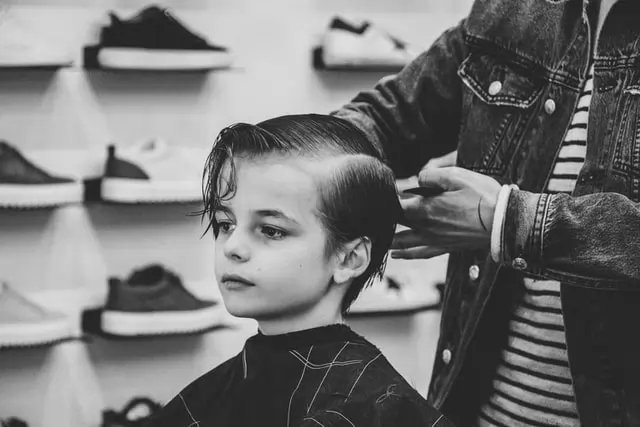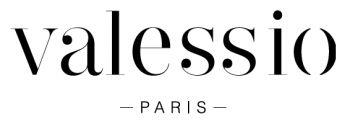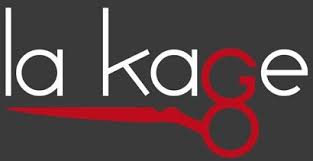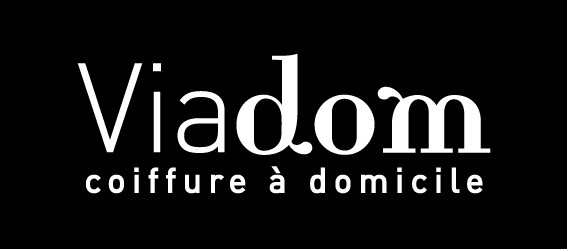Synthèse
Since the provided text and data mainly focus on the French hairdressing market with figures, there's limited information about global trends post-2020. The data in the text indicates that the French hairdressing market saw a decline in the number of employing salons from 41,512 to 39,480 and a decrease in interest for professional training, with the number of apprentices in the hairdressing field also declining. While women, making up the majority of the clientele, visited salons 4.4 times per year with an average annual budget of €194.4, men frequented salons more often at 6.6 times per year but spent less. The hairdressing sector has been enduring structural changes, marked by increasing competition from home hairdressers who offer services at lower prices. This segment has grown to represent 25% of the sector's activity. Hair salons are diversifying their services and adapting to fashion trends, including the rise of barbershops, to meet new customer expectations. As for regulations, various financial aids and training requirements are mentioned, with specific legislation governing the qualifications to practice hairdressing and the use of certain products. In sum, the French hairdressing industry is negotiating a challenging landscape marked by increased competition, evolving consumer preferences, and a necessity for modernization and regulatory compliance, although this analysis lacks data specific to the period after 2020.
Trends and Dynamics in the Hairdressing Market
As we examine the hairdressing market within this particular country, several pivotal trends emerge. With billions being spent annually in hair salons, predominantly by the female demographic, the industry remains a significant player in the personal care and beauty sector. The market, however, is not without its challenges. An observable decline in the number of apprentices signals a potential future shortfall in trained professionals entering the field, a situation compounded by the slower creation and takeover rates of hairdressing businesses. Salons are facing increased competition from home hairdressers who, benefiting from lower overhead costs, are able to offer services at more competitive prices. This has precipitated a reported annual decline of approximately 1.1 percent in sector activity, with the number of salons with employees decreasing by a couple of thousand units over a six-year period.
Despite these shifts, demand for hairdressing services is still largely driven by female clients, who on average visit salons between four and five times a year, with an average spend of around 200 euros annually. Men frequent salons more often, averaging over six visits per year, albeit spending about half per visit compared to female clients. Service variety remains core to salon offerings, with haircuts, colorings, and treatments being the most availed services. A trend worth noting is the rise of do-it-yourself practices in hair care, including cutting and coloring, possibly impinging upon the traditional salon business model.
Another noteworthy development is the popularity of niche services such as dedicated barber shops that cater to a more male-oriented clientele, providing beard and hair grooming services. The market share of home hairdressing has also risen, now constituting a quarter of the sector's activity. From a regulatory standpoint, there are specific qualifications and conditions for setting up as a hairdresser—including proving professional competence and good character.
Additionally, the PACTE Act has proposed making the installation preparation course for setting up a business an optional undertaking. In terms of market structure, franchised hair salons and independent salons contribute significantly to the landscape, with leading franchises reporting revenues beyond 100 million euros.
Independent salons, too, play a role, with turnovers ranging from under 200,000 euros to figures undisclosed. In summary, the hairdressing market is undergoing structural changes shaped by competition from home services, shifting demands for training and recruitment, and evolving consumer preferences.
Market actors must adapt to these developments through innovation and by tailoring their offerings to meet new customer expectations.
Key Players Steering the French Hairdressing Market Landscape
The French hairdressing market, a vibrant and dynamic sector, is shaped by a diverse array of businesses that range from franchised salon networks to independent operators, each contributing its unique flair to the industry.
- Provalliance holds a commanding presence as a leading name in salon franchising. With a repertoire that includes popular brands, Provalliance has established itself as a powerhouse driving trends and setting standards across the market.
- Dessange International is synonymous with luxury and elegance, transcending beyond national borders to offer a premium salon experience. With a strong identity tied to sophistication, it continues to allure a clientele seeking high-end services.
- Biguine, another crucial player in the franchise segment, offers a harmonious blend of accessibility and quality, ensuring that chic Parisian hairstyle sensibilities reach a wider audience.
- Tchip stands out for its value-oriented approach to hair care, proving that style and affordability can coexist. This brand attracts a diverse clientele looking to maintain their locks without compromising on their budget.
- Transitioning to the realm of individuality and character, independent salons like Valessio - Hairdresser Paris and Camilia Coiffure showcase the artistry of personal touch and bespoke services that personalize the hairdressing experience.
- The Kage, with its distinct aesthetic and service array, and Grizzly Barber Shop, carving a niche in the men's grooming segment with a focus on tradition and craftsmanship, exemplify the breadth of opportunities within the independent sector.
- Meanwhile, The Haircut introduces a competitive edge with their mobile barbershop concept, revolutionizing accessibility and convenience in men's grooming.
- Wecasa, venturing into the digital realm, bridges the gap between professionals and clients through technology, reimagining how hairdressing services are delivered and experienced in the modern era.
- Viadom, with a strong foothold in home hairdressing, taps into the growing demand for in-home services, offering the salon experience with the comfort of personal space.
- Lastly, Home Beauty further diversifies the market, catering to clients' beauty needs within the sanctuary of their homes, redefining the bounds of traditional hairdressing business models.
As the French hairdressing market continues to evolve, these leading actors keep adapting to the changing tides, crafting the future trajectory of this ever-fashionable industry.
à la compréhension de ce marché
Détail du contenu
 Informations
Informations
- Nombre de pages : 30 pages
- Format : Version digitale et PDF
- Dernière mise à jour : 18/03/2024
 Sommaire et extraits
Sommaire et extraits
1 Market overview
1.1 Market overview
Hairdressers carry out a range of hygienic and aesthetic hair care operations, either in a salon or directly at the customer's home. This may involve cutting, coloring, perming, etc. However, salons have developed a number of ancillary activities, notably the sale of beauty products and accessories.
The global hair salon market is dynamic, and is expected to continue growing at a CAGR of 7.4% over theperiod 2022-2029. Several factors are fuelling this growth, such as the development of home services and mobile salons, the diversification of professional offerings, and the rise of "barbers".
In France, the market has been growing structurally for a decade, with the exception of 2020, when it was hit hard by the health crisis . Indeed, between 2010 and 2019, sales in the sector rose by 26%, before falling radically in 2020 (-18% vs. 2019). The French market had a good year in 2023, growing over 2022, and has exceeded its pre-void level since 2022. In 2021, the market is up 18% on the previous year, but still below its pre-sanitary crisis level. Hairdressing market players can be segmented into 3 categories: independent salons, chain salons (such as Franck Provost, Pascal Coste, Dessange, etc.), and home-based or itinerant hairdressers. The latter are increasingly numerous, and compete with salons by offering generally lower prices. What's more, the industry's sales are driven by services for women, which account for over two-thirds of revenues.
1.2 The global market
The global salon services market, which includes hair salon services, is estimated at $*** billion in ****, and is expected to grow at a CAGR of *.**% over the period ****-****, to exceed $*** billion in **** .
According to FortuneBusinessInsights, the salon sub-segment will account for **.**% of the total salon services market in ****. based on this ...
1.3 The domestic market
Hairdressing market players are listed under NAF code **.**A. This class includes :
washing, cutting, styling, dyeing, coloring, waving, straightening and similar services for men and women shaving and beard trimming
INSEE provides the size of the market in ****, as well as theannual sales indexfor the corresponding NAF code.
This market sizeamounted ...
1.4 Impact of Covid-19 and seasonality of demand
Impact of Covid-**
The graph below details the monthly sales index for the hairdressing sector in ****, the year of the health crisis. We can see the drop in business revenues in March-April (***). Indeed, during these two confinements, hairdressing salons were forced to close their doors. [***]
Monthly sales index for the hairdressing ...
2 Demand analysis
2.1 Hairstyling as part of French spending on physical appearance
The following graph shows the evolution of the breakdown of spending on personal care and goods. We can see that in ****, the proportion of spending on hairdressing, although similar to ****, fell by *.* points. This can, however, be partially explained by the closure of salons for several months. Months during which the ...
2.2 Frequency of visits to the hairdresser
The majority of French people (***). In addition, **% of French people did not use the services of a hairdresser in ****.
Frequency of hair salon visits France, ****, in Source: ****
2.3 Medium-sized sheets
The average plug is the money spent by the customer during a visit to the hairdresser. It is the equivalent of the "average basket" or "average ticket" for this profession. In ****, this will amount to **.* euros for men and **.* euros for women. We can see from the following table that the ...
2.4 Important criteria when choosing a hairdresser for women
There are a number of reasons why customers choose a hairdresser or salon. The most important is the price of the services offered (***). [***]
Two other criteria emerge from the study, notably the salon's reputation, which is decisive for **% of customers, and the ease of booking a last-minute appointment for **% of ...
2.5 France's favourite hair salons
The graph below is based on OpinionWay's survey of French people's favorite brands in February ****. These are respondents' answers to the question "Do you like this or that hairdressing salon?" for each brand, with the percentage corresponding to the proportion of respondents who answered "yes".
Dessange Paris is the favorite hair ...
2.6 Demand trends
Fashion and choice
Customer demand for haircuts from hairdressers is highly fashionable, especially among younger customers. Every year, new trends emerge or make a comeback, whether for women or men. These new trends are often relayed by the fashion, beauty and lifestyle press, but also increasingly by influencers on the various ...
3 Market structure
3.1 An increase in the number of establishments
Number of establishments
In ****, the sector will have ***,*** establishments, compared with ***,*** in ****, an increase of *.*%. In ****, during the health crisis, the number of establishments also rose by *% compared to ****, showing that the confinements caused by covid-**, which prevented hairdressers from carrying on their business for several months, did not lead to ...
3.2 A decline in the sector's workforce
While the number of companies in the sector is tending to increase (***), the trend is reversed in terms of headcount, as the following graph shows. At December **, ****, there were ***,*** people working in the sector, compared with ***,*** in ****, a decline of *.*% in * years. However, in ****, **** and ****, the number of employees increased by ...
3.3 Hair salon networks
Only *% of establishments are part of a brand network (***), chain salons account for **.*% of employer establishments.
conversely, while home hairdressing establishments account for **.% of total establishments, they represent only *.*% of employer establishments, which shows that the vast majority of home hairdressing establishments are made up of self-employed people.
Breakdown of establishments ...
3.4 The weight of different sources of income
Unsurprisingly, hairdressing services account for the vast majority of the sector's sales. The second-largest source of revenue is product sales (***), providing a good ancillary source of income.
Breakdown of sales by activity France, ****, in Source: ****
Moreover, the majority of hairdressing revenues are generated by services for women (***)
Breakdown of sales by ...
4 Offer analysis
4.1 Price analysis
Hair salons offer a wide range of services, especially for women. Prices generally vary according to the quality of the service, the region where it is performed (***)
In ****, the average price of a standard shampooing-cutting-styling service for men will be **.* euros, while the average price of a shampooing-cutting-styling service for women ...
4.2 Significant price trends
The following two graphs show price trends for women's and men's and children's hairdressing services over the past decade.
We can see a continuous and similar rise in prices for women's hairdressing and men's and children's hairdressing services (***).
We can also see an acceleration in price rises from **** onwards. (***). In ****, annual ...
4.3 Service diversification
According to UNEC, **% of hair salons will have introduced a new service by ****. In ****, this proportion rose to **%, and to *.*% in ****.
The following graph shows the top * new services introduced by hairdressers in ****, ****, **** and ****. The most frequently cited new services in **** are straightening (***): its rate of citation divided by * in **** perhaps ...
4.4 Home hairdressing continues to gain ground
The hairdressing profession has gradually evolved with the creation of the auto and micro-entrepreneur status in ****. More and more hairdressers have chosen to set up as home-based hairdressers rather than as salon-based hairdressers (***). Today, home-based hairdressing accounts for **% of the sector's business, up from **.*% in ****.[***]
As a result, in ****, **,*** hairdressing establishments ...
5 Regulations
5. Regulations
Installation conditions
Legal Start lists all the conditions required to set up as a hairdresser. First and foremost, you need to have sufficient professional qualifications to be able to practice the trade:
a professional or master's diploma in hairdressing A professional certification diploma directly related to the field of hairdressing
All ...
6 Positioning the players
6.1 Player segmentation
- Provalliance (Holding)
- Valessio - Coiffeur Paris
- Camilia Coiffure
- La Kage
- Gizzly Barber Shop
- The Haircut
- Wecasa
- Viadom Coiffure Viasphère
- Domicile Beauté
- Frank Provost (Provalliance groupe)
- Dessange International
- John Nollet
 Liste des graphiques
Liste des graphiques
- Taille de marché mondial des services de salon (pour cheveux, ongles, ou peau)
- Répartition du budget des Français dédié aux soins et biens personnels
- Fréquence de visite d'un salon de coiffure
- Prix shampoing + coupe + coiffage à Paris et en Province
- Prix shampoing + coupe + coiffure
Toutes nos études sont disponible en ligne et en PDF
Nous vous proposons de consulter un exemple de notre travail d'étude sur un autre marché !
Dernières actualités
Entreprises citées dans cette étude
Cette étude contient un panorama complet des entreprises du marché avec les derniers chiffres et actualités de chaque entreprise :
 Choisir cette étude c'est :
Choisir cette étude c'est :
Accéder à plus de 35 heures de travail
Nos études sont le résultat de plus de 35 heures de recherches et d'analyses. Utiliser nos études vous permet de consacrer plus de temps et de valeur ajoutée à vos projets.
Profiter de 6 années d'expérience et de plus de 1500 études sectorielles déjà produites
Notre expertise nous permet de produire des études complètes dans tous les secteurs, y compris des marchés de niche ou naissants.
Notre savoir-faire et notre méthodologie nous permet de produire des études avec un rapport qualité-prix unique
Accéder à plusieurs milliers d'articles et données payantes
Businesscoot a accès à l'ensemble de la presse économique payante ainsi qu'à des bases de données exclusives pour réaliser ses études de marché (+ 30 000 articles et sources privées).
Afin d'enrichir nos études, nos analystes utilisent également des indicateurs web (semrush, trends…) pour identifier les tendances sur un marché et les stratégies des entreprises. (Consulter nos sources payantes)
Un accompagnement garanti après votre achat
Une équipe dédiée au service après-vente, pour vous garantir un niveau de satisfaction élevé. (+33) 9 70 46 55 00
Un format digital pensé pour nos utilisateurs
Vous accédez à un PDF mais aussi à une version digitale pensée pour nos clients. Cette version vous permet d’accéder aux sources, aux données au format Excel et aux graphiques. Le contenu de l'étude peut ainsi être facilement récupéré et adapté pour vos supports.
 Nos offres :
Nos offres :
the hairdressing market | France
- Quels sont les chiffres sur la taille et la croissance du marché ?
- Quels leviers tirent la croissance du marché et leur évolution ?
- Quel est le positionnement des entreprises sur la chaine de valeur ?
- Comment se différencient les entreprises du marché ?
- Données issues de plusieurs dizaines de bases de données
Pack 5 études (-15%) France
- 5 études au prix de 75,6€HT par étude à choisir parmi nos 800 titres sur le catalogue France pendant 12 mois
- Conservez -15% sur les études supplémentaires achetées
- Choisissez le remboursement des crédits non consommés au terme des 12 mois (durée du pack)
Consultez les conditions du pack et de remboursement des crédits non consommés.





 Provalliance, leader de la coiffure, se lance en Inde avec Franck Provost - 19/02/2024
Provalliance, leader de la coiffure, se lance en Inde avec Franck Provost - 19/02/2024
 Plusieurs acheteurs intéressés par la vente de Dessange International - 08/03/2021
Plusieurs acheteurs intéressés par la vente de Dessange International - 08/03/2021






















